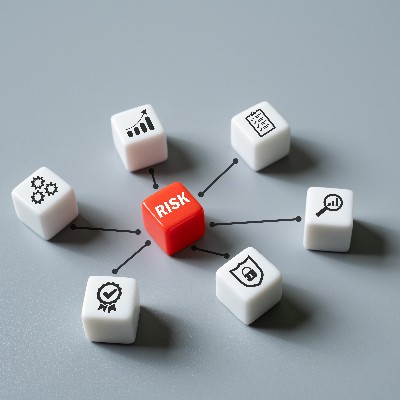
KB Technologies Blog
KB Technologies has been serving the Deerfield Beach area since 2002, providing IT Support such as technical helpdesk support, computer support, and consulting to small and medium-sized businesses.
0 Comments
What would you do if you ever lost your phone—or worse, it was stolen? Mobile devices play an important role in most modern-day workplaces, so you’d probably be in for a rough go of it. Data loss, privacy, and security are all risks when you lose access to a mobile device, and often the only way to address these issues is to simply wipe the device and hope for the best… until now, that is.
There’s no escaping the inherent risk that comes from anything worth doing, and that includes business. That said, you can take steps to minimize the bad and make more room for the good. One such way you can do this is with an effective disaster recovery strategy.
Today, we’re looking at what goes into building a proper disaster recovery strategy and why your business needs to consider it a priority.
Downtime is the not-so-silent business killer, as the second operations go down in a meaningful way, all hands are on deck to figure out what’s going wrong and how to fix it. But wouldn’t it be great if you could prevent all of that chaos in the first place? That’s the end result we hope you take away from today’s blog.
Business can be challenging, even when things are going well. You still have to address issues and the problems they create when they aren’t taken care of promptly. Some of these issues can be so catastrophic that keeping a positive mindset can be the greatest challenge of all—yet that doesn't diminish its value.
Data backup, while crucial to an organization’s continuity and sustainability, hasn’t had too many innovations over the past few years. Ever since businesses have started to do away with the resource intensive backups that required manual effort or antiquated methods (we’re looking at you, tape), backups and backup strategies have standardized a bit. In today’s blog, we’ll take you through that process and how emerging technologies are improving backup technology.
Mobile malware may not always be in the spotlight, but it can seriously threaten organizations that rely on smartphones, particularly small businesses with limited resources. These businesses often lack the extensive teams and budgets required for comprehensive mobile strategies, including device management, data protection, phone plans, and security measures. In this article, we'll explore how even organizations with tight budgets can effectively guard against mobile malware.
Most business owners don’t have the right technology in place. We see it all the time. A company will call us because they are not seeing the returns they anticipated on their technology investment, and after the assessment, they simply don’t have the right tools in place.
Make no mistake about it, electing the right technology for your business is crucial for success. In today’s blog, we provide four tips to guide you in making the best choice.
Data powers businesses, but it’s not just confined to the professional world—we share vast amounts of data in our personal lives, too. Even seemingly trivial communications like chats, grocery requests, and meme or pet picture exchanges are data. And wherever there’s data, there’s a place where it’s stored.
There is an important distinction in business between knowing what a problem is at the moment versus what a problem might be in the future. It’s crucial that businesses understand how to assess the risk of situations and determine what must be addressed immediately. Today, we want to help your business determine these problems and flip the script on them, turning them into opportunities for improvement.
Technology is crucial for business operations today, regardless of a company’s size or growth. Therefore, it is vital that the IT infrastructure can adapt to changes in business scale.
Let’s discuss why having an IT infrastructure that fits your business is important and explore best practices for tailoring it.
Businesses rely heavily on technology and data to keep running smoothly. But what happens when disaster strikes? Whether it’s a natural disaster like a hurricane or an unexpected event like a cyberattack, businesses need a plan to keep going. This is where disaster recovery comes in. Let’s break down what disaster recovery is and why it’s vital for business continuity.
A lot is made of the rising costs that everyone is seeing over the past several years. This inflation extends itself for IT-related downtime as well. Now that most businesses are using some form of technology to run their business, losing access to those systems for any length of time can be a major problem. Today, we’ll take a look at the cost of downtime, what causes it, and how to ensure that you do everything you can to keep it from negatively affecting your business.
Secure and reliable file sharing is crucial for businesses, enabling collaboration, communication, and promoting improvements to an organization’s productivity. With the rise in cyberthreats, however, it's imperative to have a plan in place to ensure the security of your files while they are in transit. Here are some best practices for secure business file sharing.
Reach Out Today!
Mobile? Grab this Article!
Tag Cloud
Privacy
Email
Managed IT Services
Tip of the Week
Software
Best Practices
Workplace Tips
Internet
Business Computing
Hosted Solutions
Workplace Strategy
Backup
Network Security
Cloud
Users
Disaster Recovery
Mobile Device
Phishing
IT Services
Malware
Technology
Productivity
Collaboration
Google
Data
Innovation
Efficiency
User Tips
Saving Money
Data Recovery
Business
Cybersecurity
Security
Ransomware
Microsoft
Hackers
Quick Tips
Hardware
Current Events
IT Support
Latest Blog
Nowadays, small and medium-sized businesses need the right technological tools to drive efficiency and growth. Software-as-a-Service has emerged as a powerful, accessible model transforming business operations. Understanding SaaS, its benefits, potential management hurdles, ...
Latest News
KB Technologies is proud to announce the launch of our new website at http://www.kb-it.com. The goal of the new website is to make it easier for our existing clients to submit and manage support requests, and provide more information about our services for ...




















